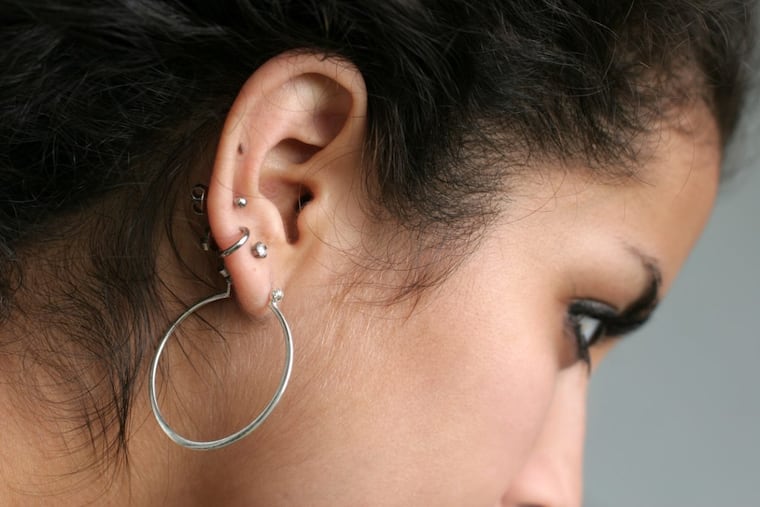Medical mystery: A teen's ear piercing goes awry
Her pediatrician prescribed an antibiotic when her ear turned warm and red after a piercing. Why wasn't it working?

Three days before she came to our emergency department, a teenager named Jessica had been seen by her pediatrician for what seemed to be a skin infection on the outside of her right ear. The redness, swelling, and pain had developed a few days after a new ear piercing, so Jessica's mother called the doctor's office.
Jessica's pediatrician diagnosed a mild case of a bacterial skin infection known as cellulitis, and gave her a prescription for an antibiotic, cephalexin, along with the standard precautions. If the redness spread or the ear became more painful, or if she developed fever, chills, or fatigue, it could be a sign of worsening infection, and she would need to either return to the office or go to the ER.
"It's just not getting any better," the girl complained to us.
She was understandably frustrated — with a high school dance just a few days away (the reason for the new ear piercing, in fact), she was worried how her swollen red ear might appear in photos, especially on social media. Was there anything we could do?
She seemed healthy to us. Her heart rate was normal, 86 beats per minute. Her blood pressure was 112/70, oral temperature 98.6. She had no headache, visual changes, or neck pain that would suggest extension of her infection into the brain or spinal cord (always a concern with infections near the face), and an inspection of her ear drum, where diagnoses of middle ear infections are made, was normal.
So why wasn't she getting better on the antibiotics prescribed by her pediatrician?
Solution
Jessica did not have cellulitis of the ear. Instead, she had a once-rare, but increasingly common, diagnosis called perichondritis. Perichondritis is an infection of the connective tissue of the ear that covers the cartilage and excludes the fatty portion of the earlobe. Perichondritis can be a devastating disease, and if left improperly treated, the infection can worsen and even liquefy the cartilage of the ear, resulting in disfigurement or loss of the external ear.
Perichondritis has many causes, but the most common ones we've identified include trauma, burns, and ear piercing. As "high ear piercing" — placing holes into the cartilage, instead of just the earlobe — becomes more fashionable, it's thought that more and more of these infections will turn up. The distinction from cellulitis is critically important, as the bacteria responsible for perichondritis requires a targeted antibiotic class.
The most common organism responsible for perichondritis is a bug called Pseudomonas aeruginosa, a virulent pathogen with the ability to resist many antibiotics, including the cephalexin prescribed by Jessica's pediatrician. Generally, outpatient treatment with a fluoroquinolone antibiotic such as ciprofloxacin is appropriate, though as pseudomonas' resistance grows stronger, some patients may require hospitalization for a course of intravenous antibiotics. All of these patients need to be evaluated by an ear, nose and throat specialist to ensure adequate improvement and to see if surgical intervention is needed to repair the damage.
Jessica was started on ciprofloxacin and saw an ENT the next day. She was monitored over the next 10 days, and the infection was completely resolved. She has no plans to have the ear repierced.
Rick Pescatore, D.O., is assistant director of research, Department of Emergency Medicine, at Inspira Health Network in Vineland. He recently completed his residency in emergency medicine at Cooper University Healthcare in Camden, where he served as chief resident.